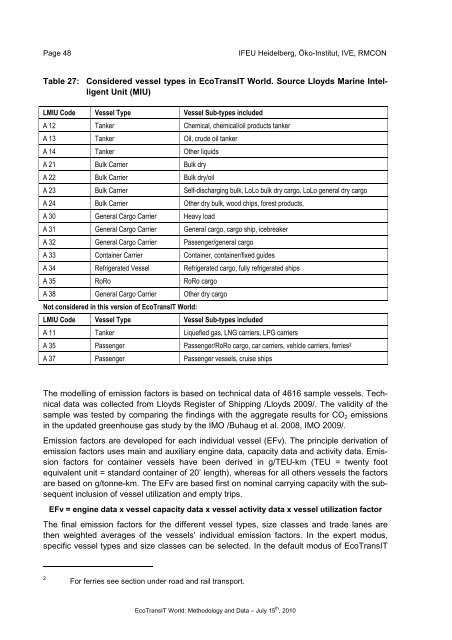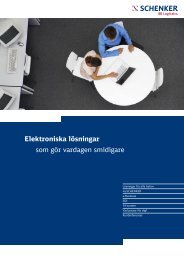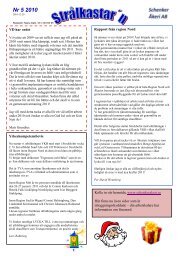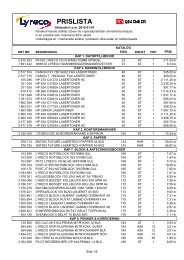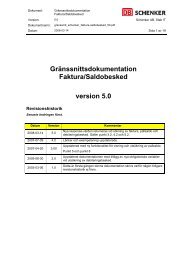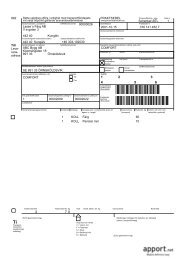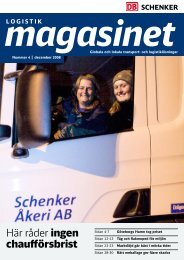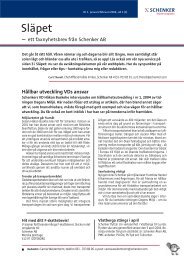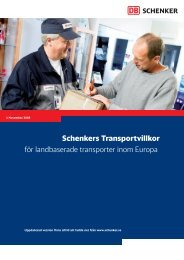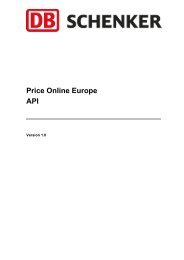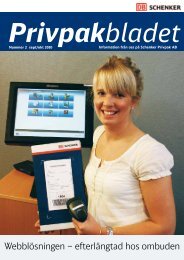Ecological Transport Information Tool for Worldwide ... - Schenker
Ecological Transport Information Tool for Worldwide ... - Schenker
Ecological Transport Information Tool for Worldwide ... - Schenker
You also want an ePaper? Increase the reach of your titles
YUMPU automatically turns print PDFs into web optimized ePapers that Google loves.
Page 48<br />
IFEU Heidelberg, Öko-Institut, IVE, RMCON<br />
Table 27: Considered vessel types in EcoTransIT World. Source Lloyds Marine Intelligent<br />
Unit (MIU)<br />
LMIU Code Vessel Type Vessel Sub-types included<br />
A 12 Tanker Chemical, chemical/oil products tanker<br />
A 13 Tanker Oil, crude oil tanker<br />
A 14 Tanker Other liquids<br />
A 21 Bulk Carrier Bulk dry<br />
A 22 Bulk Carrier Bulk dry/oil<br />
A 23 Bulk Carrier Self-discharging bulk, LoLo bulk dry cargo, LoLo general dry cargo<br />
A 24 Bulk Carrier Other dry bulk, wood chips, <strong>for</strong>est products,<br />
A 30 General Cargo Carrier Heavy load<br />
A 31 General Cargo Carrier General cargo, cargo ship, icebreaker<br />
A 32 General Cargo Carrier Passenger/general cargo<br />
A 33 Container Carrier Container, container/fixed guides<br />
A 34 Refrigerated Vessel Refrigerated cargo, fully refrigerated ships<br />
A 35 RoRo RoRo cargo<br />
A 38 General Cargo Carrier Other dry cargo<br />
Not considered in this version of EcoTransIT World:<br />
LMIU Code Vessel Type Vessel Sub-types included<br />
A 11 Tanker Liquefied gas, LNG carriers, LPG carriers<br />
A 35 Passenger Passenger/RoRo cargo, car carriers, vehicle carriers, ferries 2<br />
A 37 Passenger Passenger vessels, cruise ships<br />
The modelling of emission factors is based on technical data of 4616 sample vessels. Technical<br />
data was collected from Lloyds Register of Shipping /Lloyds 2009/. The validity of the<br />
sample was tested by comparing the findings with the aggregate results <strong>for</strong> CO 2 emissions<br />
in the updated greenhouse gas study by the IMO /Buhaug et al. 2008, IMO 2009/.<br />
Emission factors are developed <strong>for</strong> each individual vessel (EFv). The principle derivation of<br />
emission factors uses main and auxiliary engine data, capacity data and activity data. Emission<br />
factors <strong>for</strong> container vessels have been derived in g/TEU-km (TEU = twenty foot<br />
equivalent unit = standard container of 20’ length), whereas <strong>for</strong> all others vessels the factors<br />
are based on g/tonne-km. The EFv are based first on nominal carrying capacity with the subsequent<br />
inclusion of vessel utilization and empty trips.<br />
EFv = engine data x vessel capacity data x vessel activity data x vessel utilization factor<br />
The final emission factors <strong>for</strong> the different vessel types, size classes and trade lanes are<br />
then weighted averages of the vessels’ individual emission factors. In the expert modus,<br />
specific vessel types and size classes can be selected. In the default modus of EcoTransIT<br />
2<br />
For ferries see section under road and rail transport.<br />
EcoTransIT World: Methodology and Data – July 15 th , 2010


